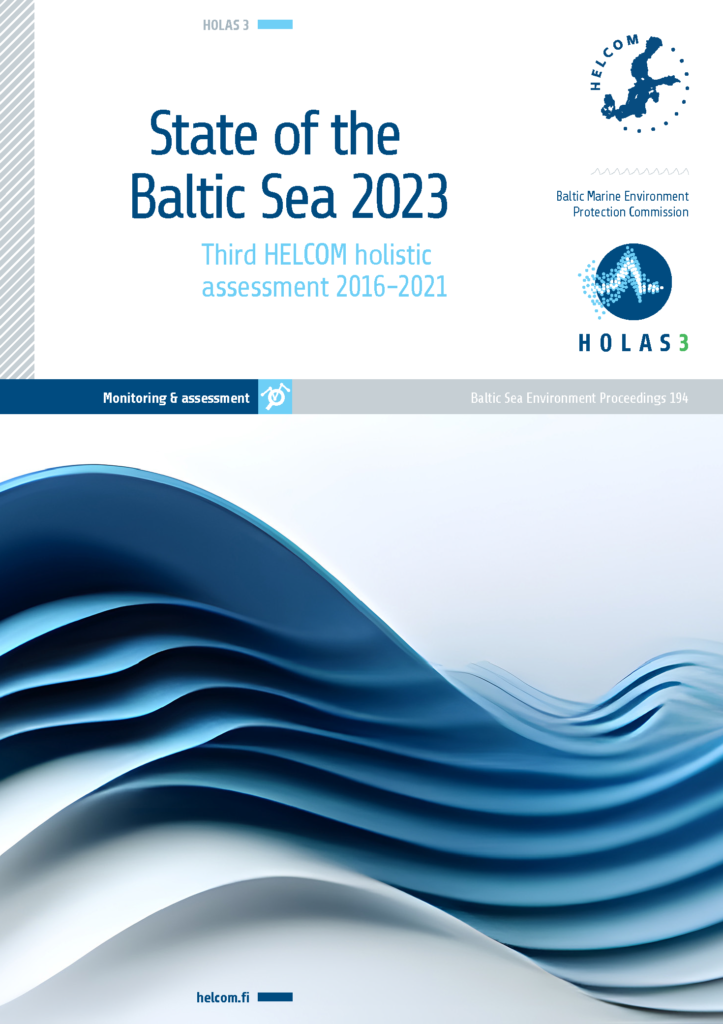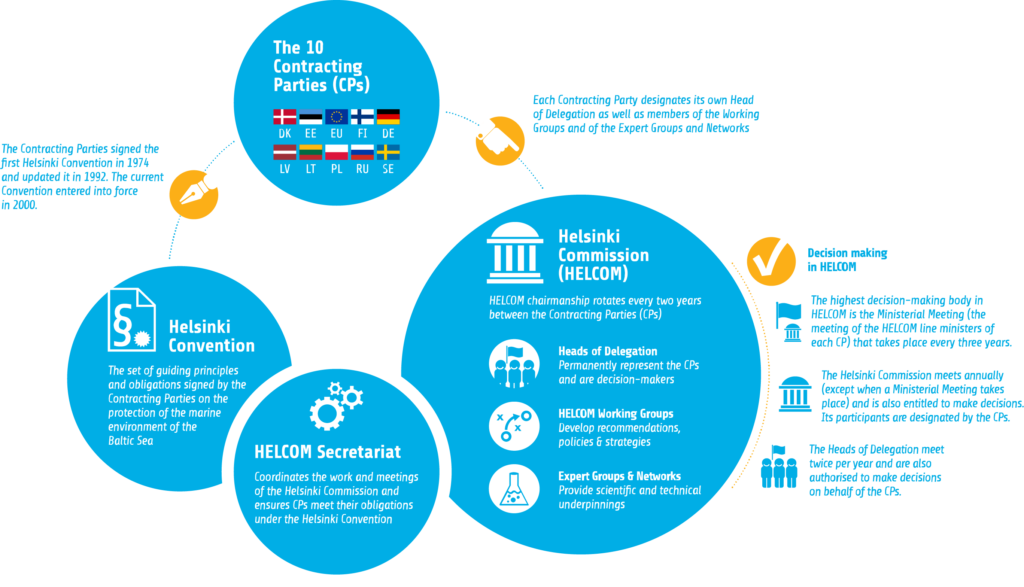HELCOM'S ROLE
How can work in HELCOM contribute?
In the Baltic Sea, where the transboundary aspects of environmental problems are highly evident, HELCOM plays a central role in coordinating environmental management objectives and in the implementation of actions and measures.
The results of the third holistic assessment show that much work is still needed to improve the status of the Baltic Sea environment. However, the progress that countries around the Baltic Sea have achieved so far clearly shows that the regional collaboration in HELCOM gives results.
It is helpful to recall what the state of the Baltic Sea environment could have been like without the measures implemented to date. Inputs of nutrients and hazardous substances have, in fact, reached sustainable levels in some areas and for some substances, biodiversity conservation has increased, and regional monitoring and assessment has considerably improved. These are all necessary and fundamental actions that we want to sustain and build upon.
For many processes in the ecosystem, models show that it will take a long time before recovery can be seen in species and habitats. Pressures that have been acting on the Baltic Sea for a long time have legacies and can cause unacceptable status for species and habitats long after they have ceased. However, in some cases, the recovery trend for biodiversity today is still too slow or even absent.
The Baltic Sea Action Plan, together with the increased capacity for knowledge-sharing developed among countries in HELCOM, forms a basis for further ecological understanding, learning, technical improvement and societal innovation that will facilitate future benefits and further improve our actions (HELCOM 2021a). We want to continue our tradition for cooperation and interaction between institutes, organisations and local initiatives around the Baltic Sea, contributing to sustainable human activities and achieving a healthy Baltic Sea environment together.
Continued efforts to improve the environmental status of biodiversity are of key importance. If we successfully limit the amount of pressure our activities put on the environment, we foresee that biodiversity will show signs of improvement and support a sustainable marine region.
The results presented in this report clearly show that in order to ensure that the Baltic Sea ecosystem maintains and improves its functions, we need to both limit the extent and intensity of pressures on biodiversity and enhance the resilience of the natural ecosystem. Ultimately, the recovery of Baltic Sea biodiversity is entirely dependent on how well we can manage our activities to ensure that they are truly sustainable, both in the near future and in the long term.
The working structure of HELCOM consists of the meetings of the Helsinki Commission, the Heads of Delegation, and the eight main HELCOM Working Groups. The HELCOM work and meetings are coordinated by the HELCOM Secretariat.

State of the Baltic Sea 2023 — The third HELCOM holistic assessment (HOLAS 3)
State of the Baltic Sea 2023 is a synthesis report that builds on, and integrates, results from a wide range of assessment products produced within the third HELCOM holistic assessment. Its role is to link information from the underpinning assessment products together, thus highlighting the holistic aspects. With this in mind, the summary report focuses on presenting the results and on an in-depth look at why we are seeing these results, providing over-arching context and analysis. The report helps develop a clearer picture of where we are and how things are connected, supporting coordinated and effective measures to strengthen the Baltic Sea environment.

